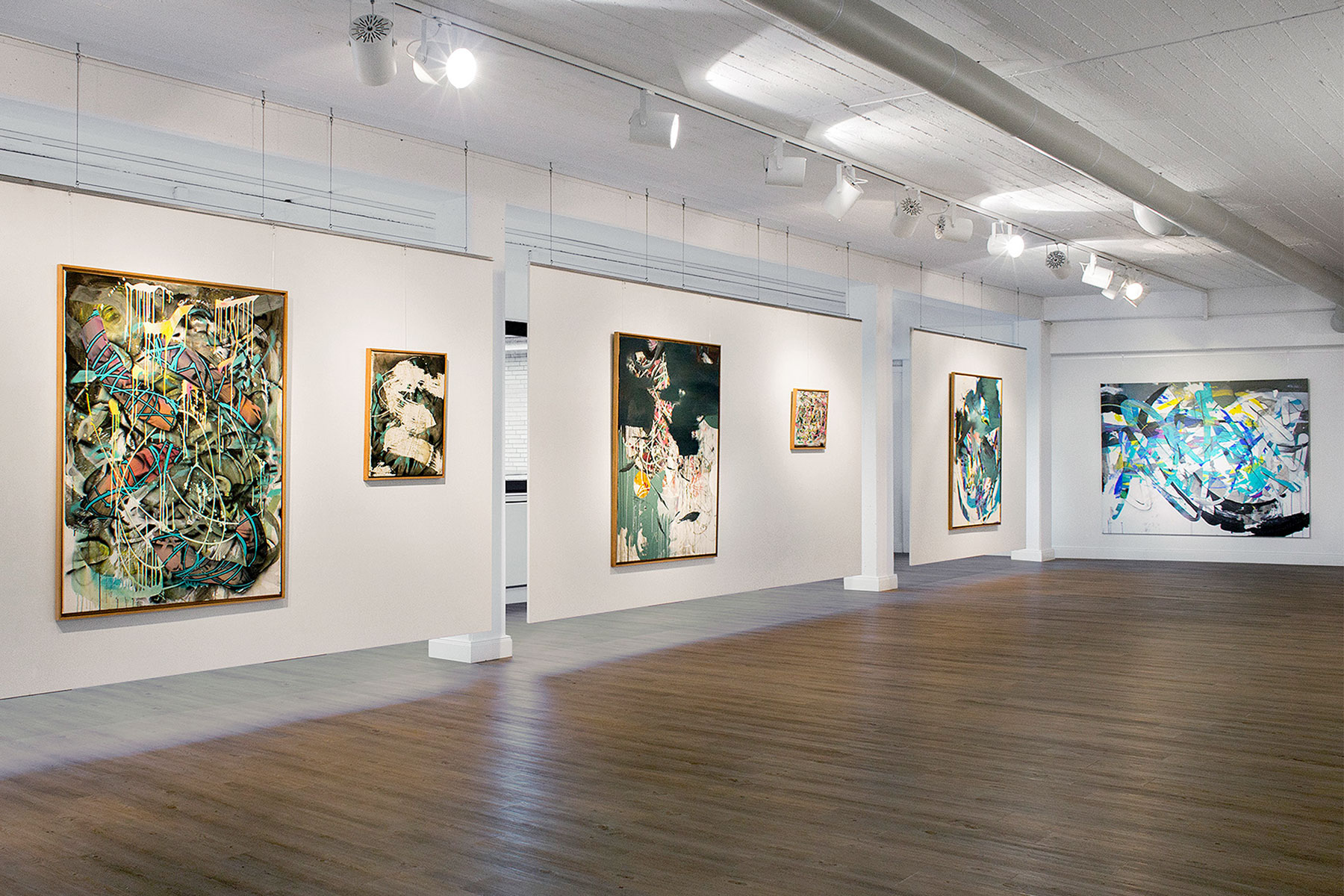
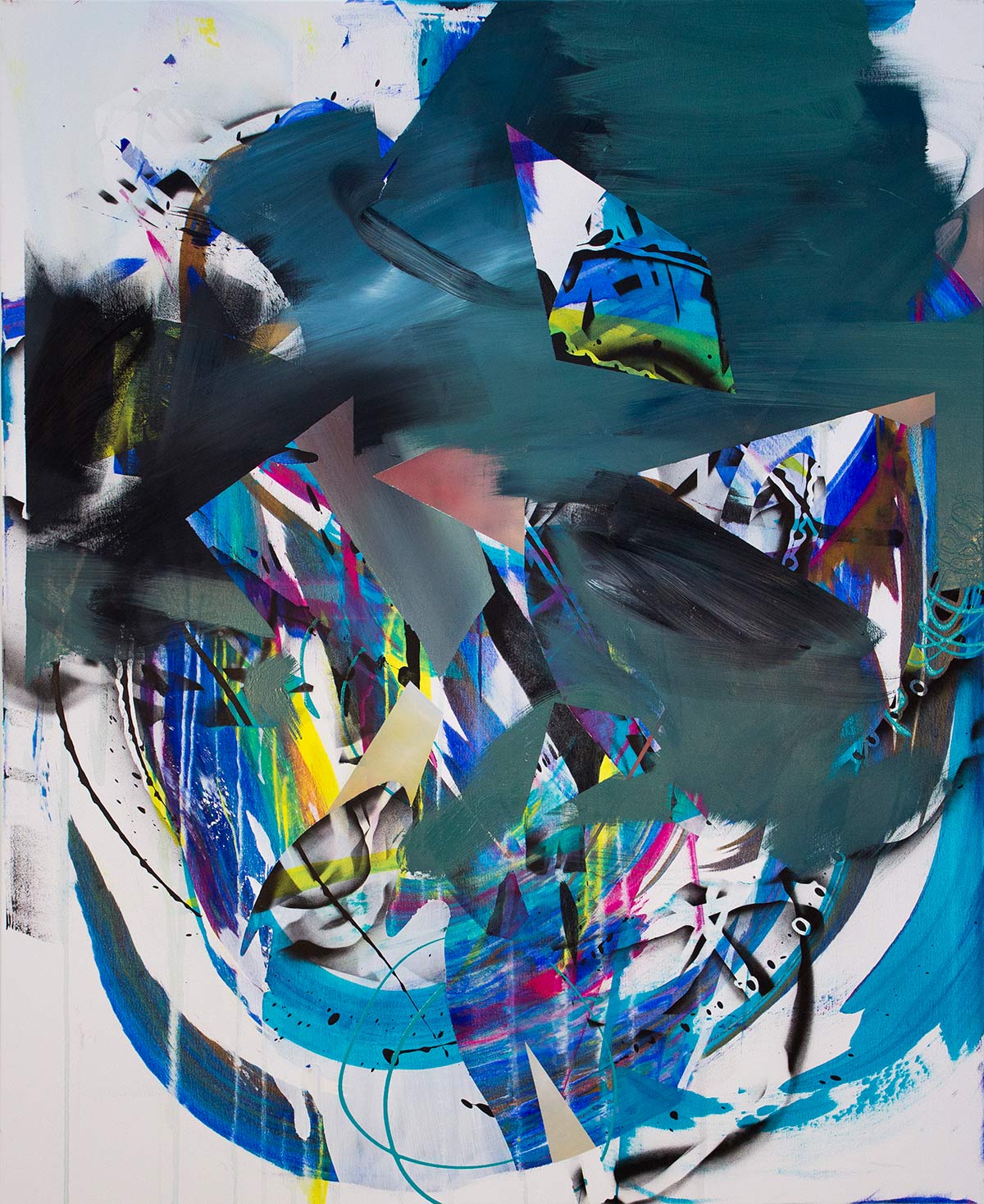
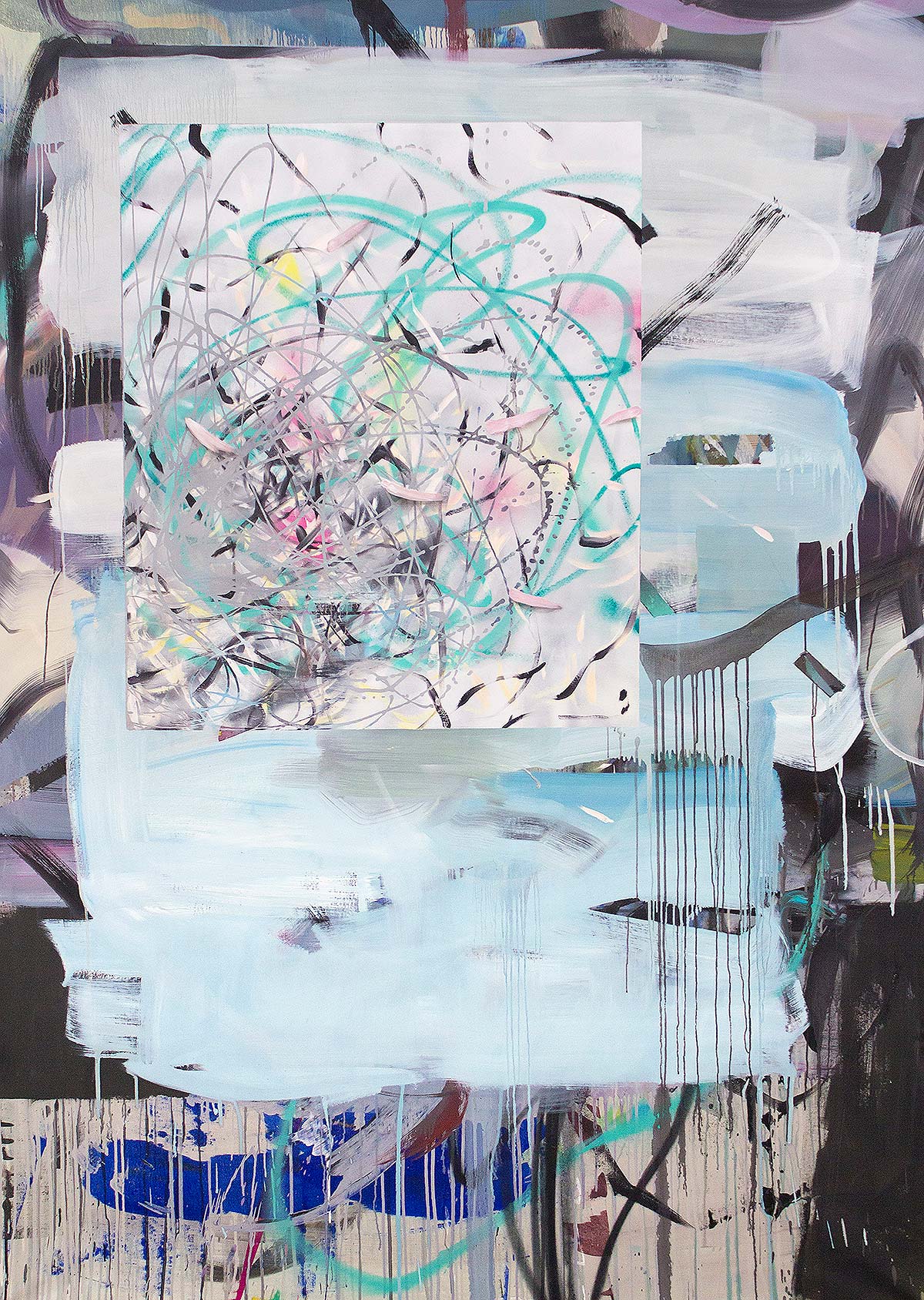
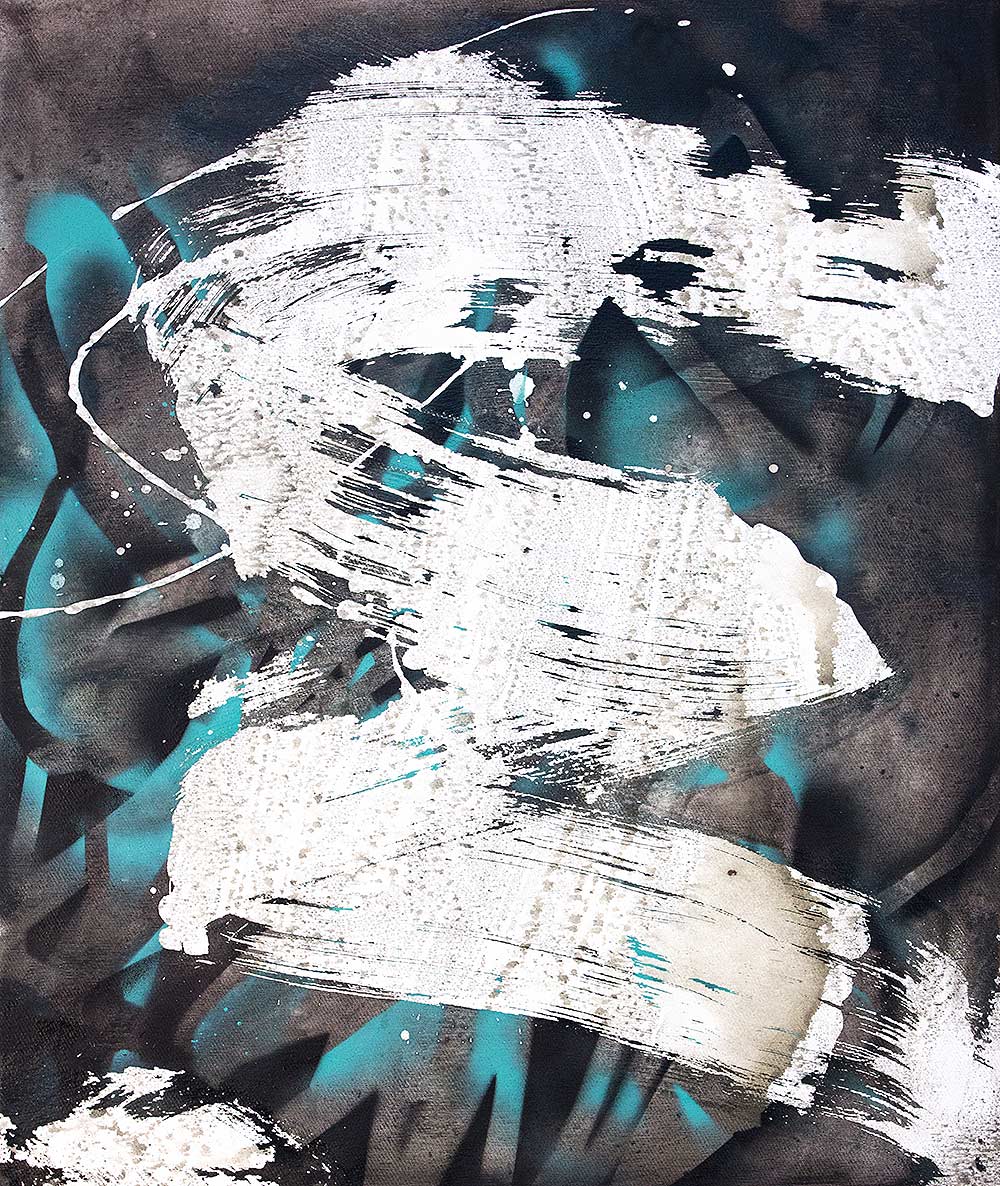
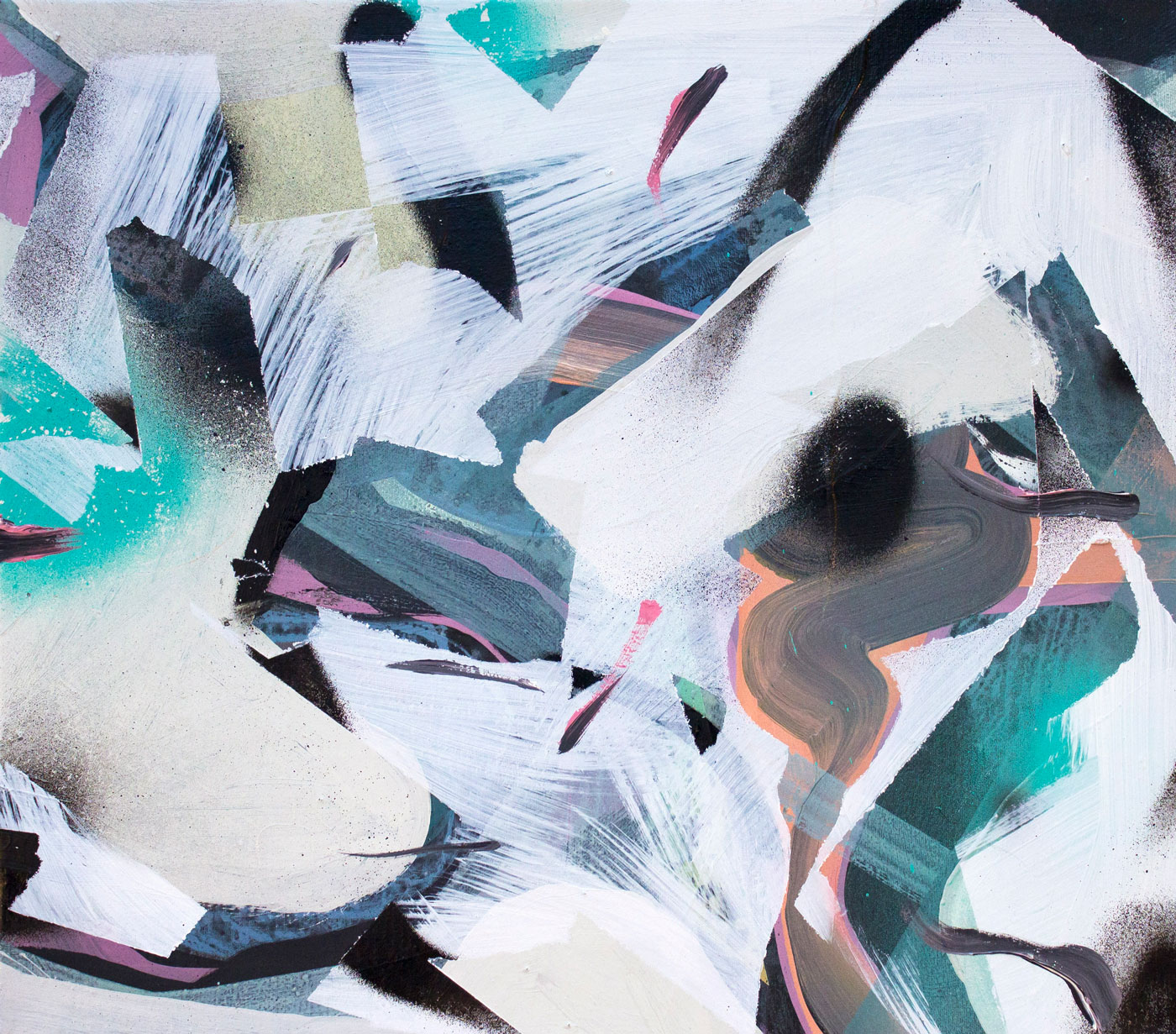
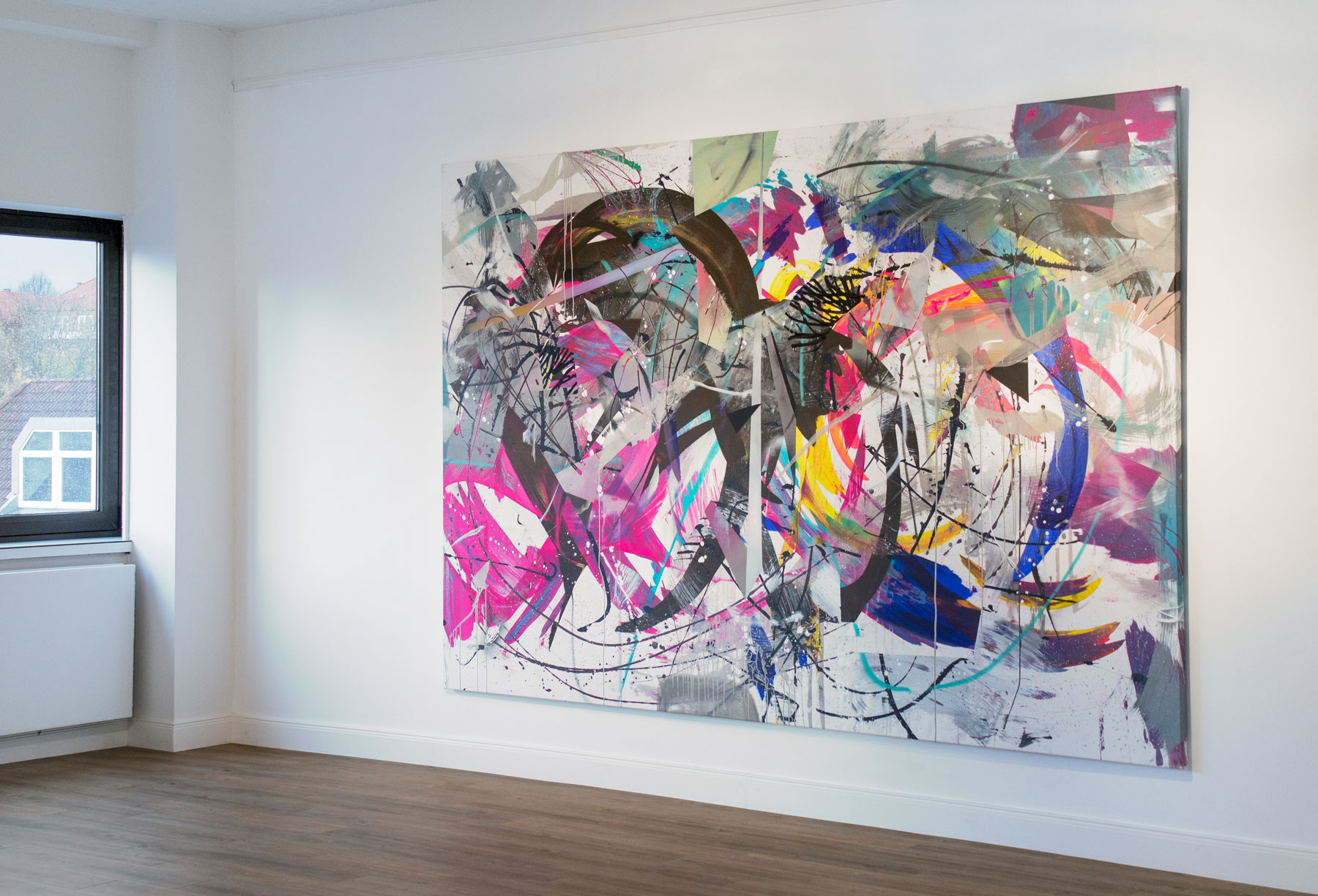
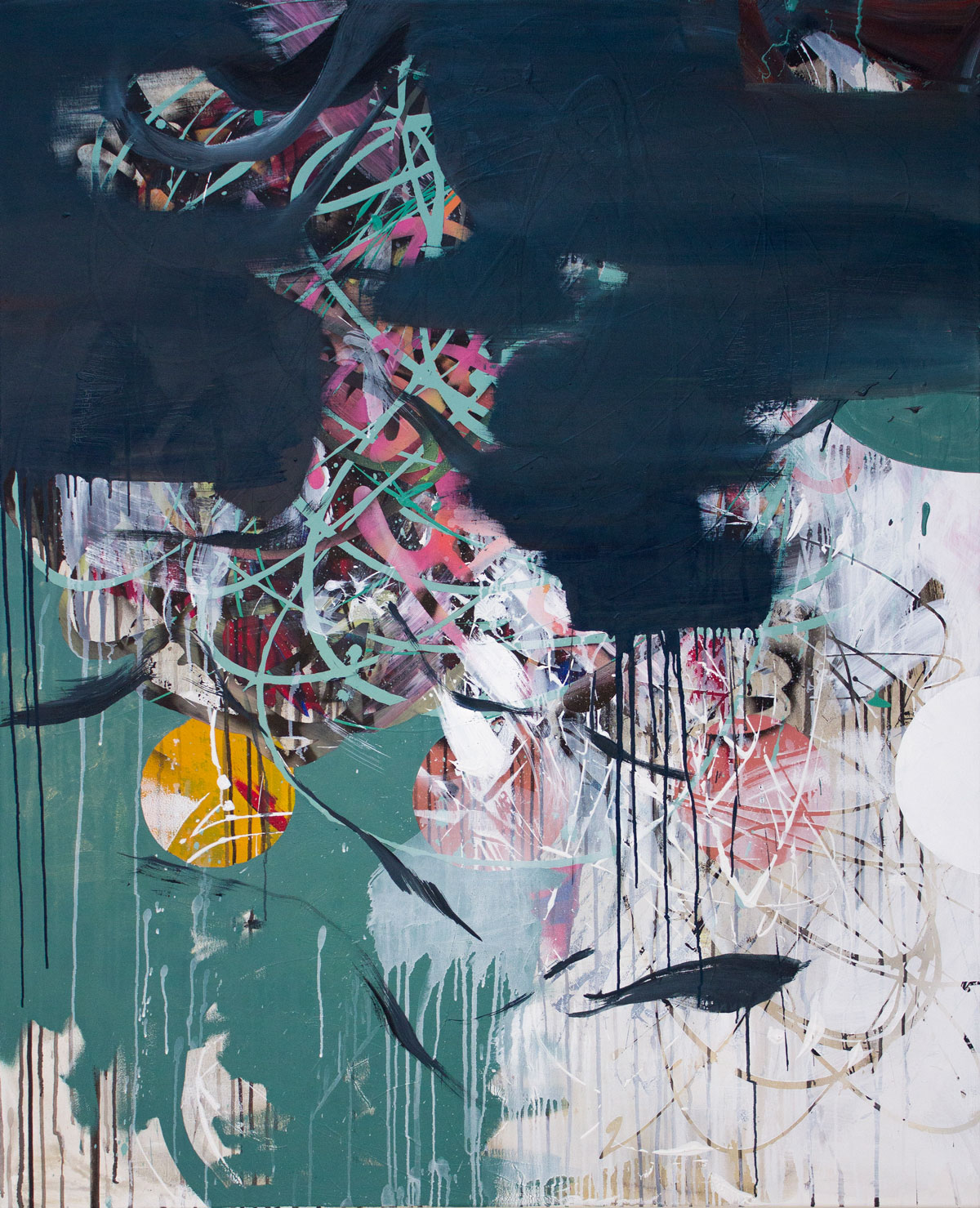
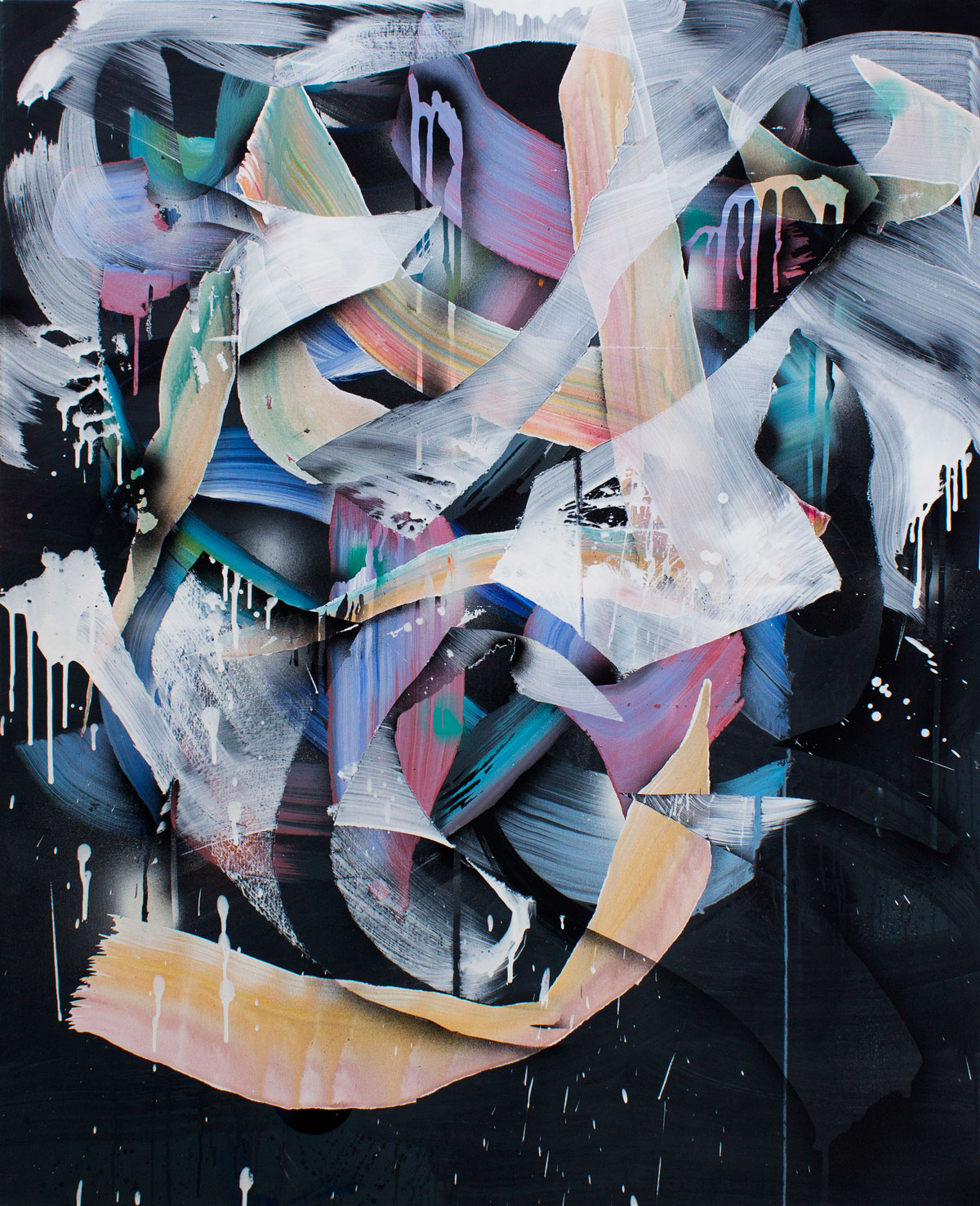
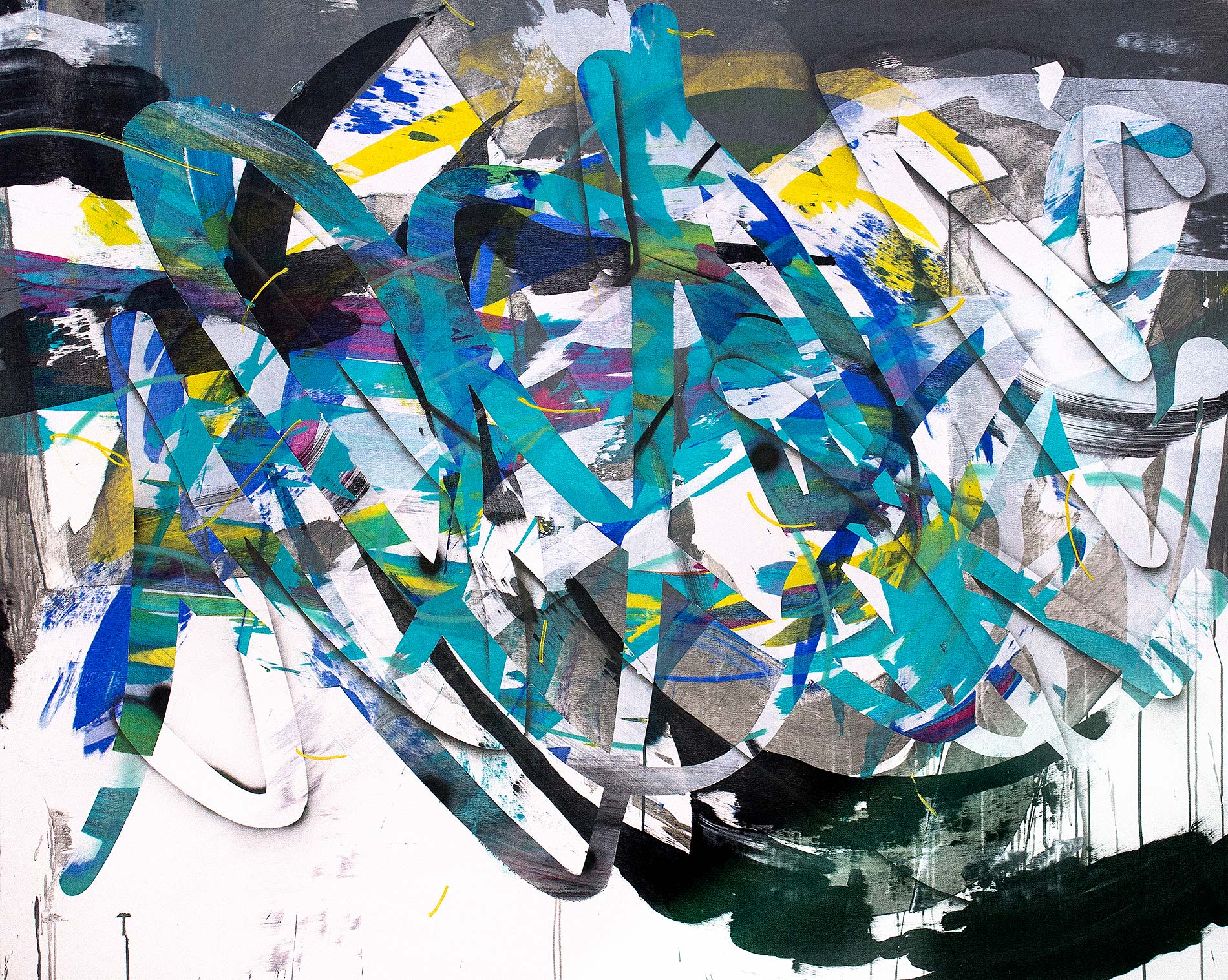
Fünfzig Jahre nach dem "Ausstieg aus dem Bild" erprobt eine junge Künstlergeneration den Wiedereinstieg. Mit seinen aktuellen Arbeiten präsentiert Malwin Faber (*1990) eine intensive Forschungsreihe zu abstrakter Malerei und Bildraum.
Faber erzeugt komplexe Synergien aus gestischen Spuren, scharfkantigen Cutouts, Linien und materialen Texturen. Die Fülle verschiedenartiger ineinander verwobener Farben und Formen wirkt zunächst wie ein Gordischer Knoten, der die ganze Aufmerksamkeit des Betrachters fordert. Dabei entwickelt Faber ein faszinierendes Wechselspiel von scheinbar widersprüchlichen Bilderfahrungen und setzt gegenläufige Akzente: Geometrisierende Elemente kontrastieren mit schwungvollen Pinselstrichen, Kleinteiliges mit Großflächigem, Konzentration mit Zentrifugalkraft. Auffallend ist die Gleichzeitigkeit von Rasanz und Ruhe, von Zufall und Präzision. Der Bildaufbau gleicht einer Improvisation im Jazz, ist eine Mischung aus Freiheit und Disziplin mit alternierenden Rhythmen.
Fabers großformatige Leinwände wie auch seine Collagen auf Papier leben durch eine erfindungsreiche Technik der Schichtung und Überlagerung. Häufig bedeckt er einzelne Partien mit Klebeband, welche er dann nach der übermalung mit neuen Farben und Formen wieder freilegt. Der Effekt ist, wie auch bei seiner Nutzung von Schablonen mit Sprühlack, eine Irritation in der Wahrnehmung der räumlichen Organisation des Bildes. Hinteres erscheint nun vorgelagert, Positives entsteht aus dem Negativ und auch zeitlich Zurückliegendes drängt sich ins Gegenwärtige. Mit dieser Art der Anti-Komposition zerbricht Faber das Raumzeitkontinuum traditioneller Bildauffassung. Sein System der sich durchdringenden planparallelen Ebenen macht eine überraschende Vielfalt an Zwischenräumen sichtbar, zugleich aber löst es die gewohnte perspektivische Beziehung der Gegenstände in einem linear in die Tiefe verlaufenden Raum auf.
Obwohl die abstrakten Bilder auch weiterhin den Eindruck illusionistischer Räumlichkeit erwecken, stellt man fest, dass Faber ein Bild nicht vom Körper (des Malers), sondern vom Raum her, aus der Tiefe entwirft. Der Raum ist dabei nicht naturhaft gegeben, sondern er wird komponiert. Max Raphael beschrieb dieses Phänomen bei George Braque: „Solange man vom Körper ausgeht, ist Raumgestaltung der Versuch, vom Endlichen ins Unendliche vorzudringen, sobald man dagegen vom Raum (…) ausgeht, wird Raumgestaltung der Versuch, vom Unendlichen zum Endlichen zu kommen.“ Raum ist demnach ein künstlerisches Kompositum und Neuschöpfung der Gegenwart. Legt die Zentralperspektive den Raum als etwas Dauerhaftes und Unbewegtes fest, erzeugt die neue Diskontinuität der Raumstruktur eine Loslösung vom Statischen. Der Raum wird hier als bewegt und plastisch erfasst.
Bemerkenswert ist in diesem Zusammenhang der informelle Malgestus, der in Fabers neuen Bildern zunehmend präsent ist. Die eindringliche Ausführung seiner dynamischen Setzungen ist Spurensicherung der eigenen künstlerischen Kraft und Identität. Jedes Bild ist ein neuer Einstieg in die Möglichkeiten der Malerei.
Interplay of Visual Space
© Dagmar Lott-Reschke M.A.
Translation: Sue Ryall
Fifty years after “Stepping out of the Picture”, a young generation of artists is attempting re-entry. With his current work, Malwin Faber, born in 1990, presents us with his intensive research series on abstract painting and pictorial space.
Faber creates complex synergies from gestural traces, sharp-edged cut-outs, lines and material textures. The abundance of different interwoven colours and shapes initially appears as a Gordian knot, demanding the full attention of the beholder. Faber focuses on presenting a fascinating interplay of seemingly contradictory images and outwardly contrasting prominences: the small-scale with the extensive, geometric elements contrasted with sweeping indexical signs, convergence with centrifugal force. Most striking is the simultaneity of speed and tranquillity, of coincidence and precision. The picture’s gradual composition resembles a jazz improvisation; it is a blend of freedom and discipline with alternating rhythms.
Both Faber’s large-format canvases and his collages on paper come to life through an inventive technique of layering and overlay. Distinct areas are often covered with masking tape, later removed once new colours and shapes have been added. The effect, as with his use of stencils and spray paint, is a confusion in how the work’s spatial composition is perceived. Background appears central, the positive emerges from the negative and even a previous past forces itself into the present. With this kind of anti-composition, Faber breaks up the space-time continuum of traditional image perception. His system of intersecting plane-parallel levels reveals a surprising variety of spaces and, at the same time, it dissolves the familiar perspective relationship between unidimensional objects and lends them the impression of depth.
Although the abstract pictures continue to give the impression of illusionary space, it is obvious that, for Faber, it is not about drafting a picture from the (painter’s) body but from free space, "de profundis". These depths are not a natural given, but are instead composed. Max Raphael described this phenomenon in George Braque thus, “When one starts from the body, spatial composition is the attempt to move from the finite to the infinite. As soon as one begins with the space itself, […] spatial composition becomes the attempt to progress from the infinite to the finite.” Free space is therefore an artistic compound and a re-creation of the present. If the central perspective defines space as something permanent and unmoved, the new discontinuity of the spatial structure creates a detachment from the immovable. Space is captured here as dynamic and malleable.
Noteworthy in this context is the informal painting gesture, which is becoming increasingly present in Faber’s new pictures. The creative process - comprising development, persona and movement - are all made visible by his own artistic force and identity. Every picture is a completely new venture into the possibilities of painting.